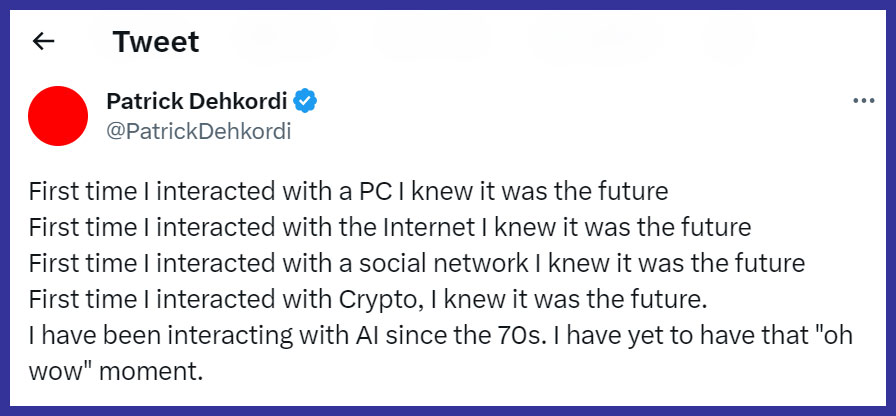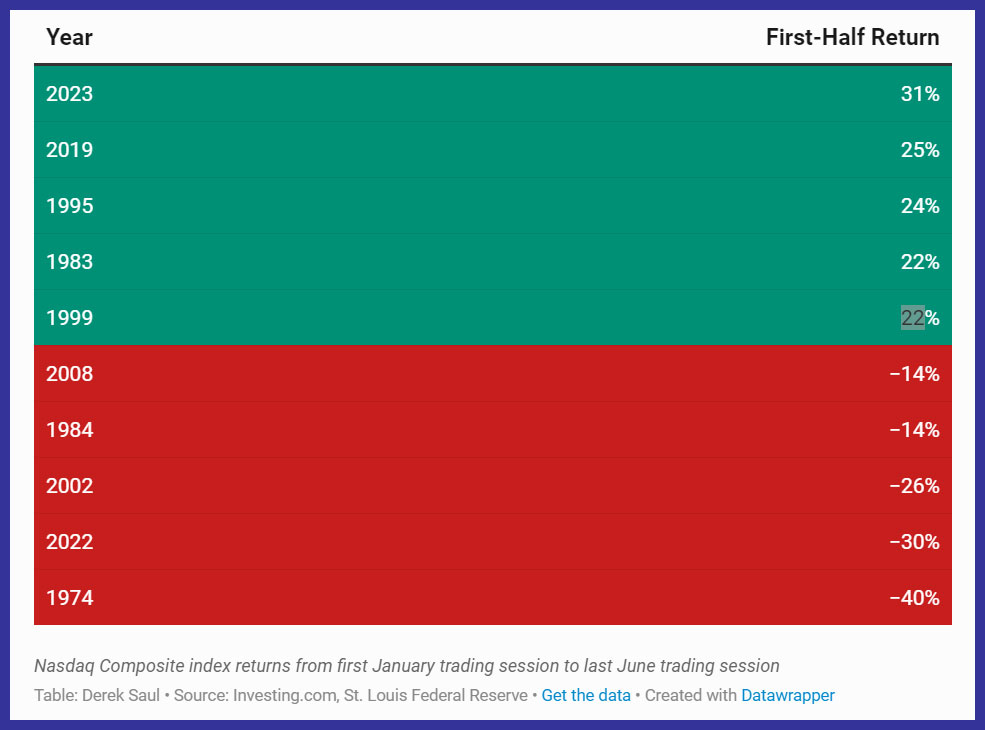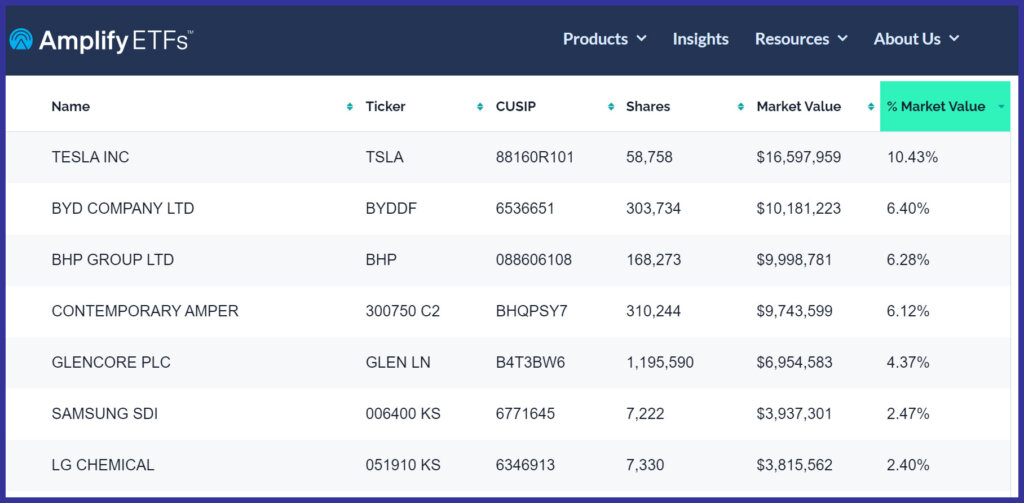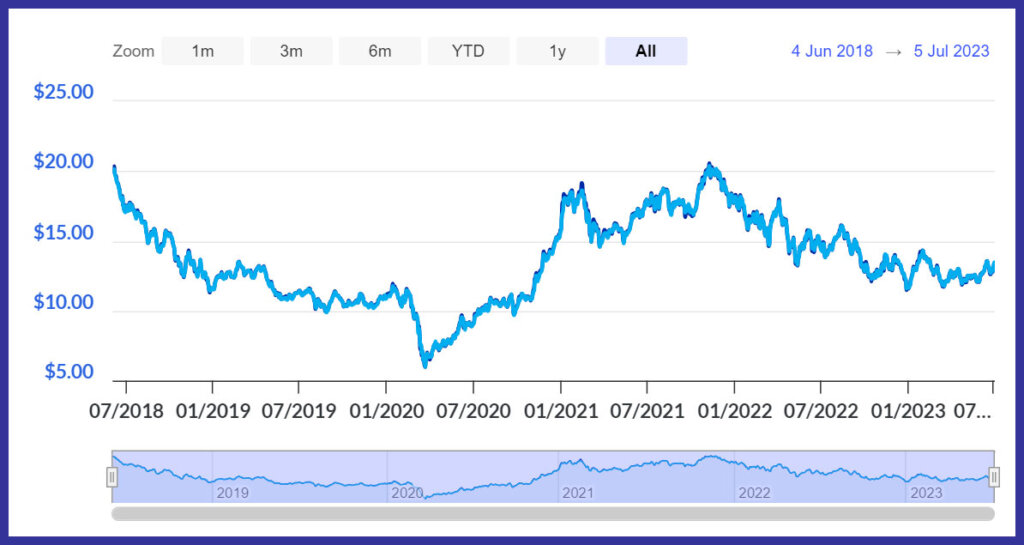Making sense of the markets this week: July 9, 2023
Investing in the EV space, dividend payers are not paying off, everything’s gone K shaped, and is artificial intelligence equal to the invention of electricity?
Advertisement
Investing in the EV space, dividend payers are not paying off, everything’s gone K shaped, and is artificial intelligence equal to the invention of electricity?

This week, Cut the Crap Investing founder Dale Roberts shares financial headlines and offers context for Canadian investors.
The markets are being driven by exuberance and the potential of artificial intelligence that goes by the handle “AI.” In the April 30 “Making sense of the markets” column, during the height of AI earnings euphoria, I wrote:
“Google and Microsoft were two of the tech stars in the headlines. The market has certainly attached a premium to how many times management mentions the letters AI, for artificial intelligence. The potential of AI is driving the enthusiasm.”
Grit Capital suggests AI is as revolutionary and life changing as was the invention of electricity:
AI is akin to the invention of electricity. ⚡️🔌 https://t.co/i6WZjdLc4D
— CutTheCrapInvesting (@67Dodge) July 3, 2023
Take note of this key phrase from that video:
“AI is going to permeate and change every aspect of our lives, not just our digital lives but our physical lives, too.”
Here’s a response from that thread. Perhaps this take is more accurate.

I admit I have no interest in using AI. And, I can assure you this post was not written by Chat GPT. 😉 But that doesn’t mean that I have no interest in profiting from AI. I hold some tech stocks, semiconductor stocks and Horizons sector ETF (CHPS/TSX). After all, the world runs on chips.
Some might argue that if you don’t hold some type of AI exposure, you may be missing out on big gains in 2023. Of course, if you own the U.S. market via IVV/NYSE, you’re already in on the spectacular AI-charged stock price gains.
Thanks to AI, the growth-focused Nasdaq 100 (QQQ) is on pace for its best first half year ever.

Those returns are electric (pun intended). And no one would have predicted what the market had in store for us in the first half of 2023.
The Nasdaq 100 has a history of outperforming the S&P 500. Forbes reports:
“Nearly 14,000%. That’s how much the Nasdaq Composite has soared from its February 1971 launch price of 100. The S&P and Dow have gained 4,300% and 3,700% over the same period, respectively.”
I would be of the opinion that the markets are getting a little too excited, akin to the dot-com bubble of the late 1990s, when the Nasdaq 100 went on to underperform the S&P 500 for more than a decade. Of course, the internet was transformative, but the higher stock prices arrived well before real profits did, and it took over a decade for the profits to catch up.
Do we have artificial gains in 2023? Two weeks ago, I wrote, asking if we were in a new bull market or a bear trap? I don’t know. And certainly, don’t take my guess as advice. The year 2023 is teaching us that we likely need exposure to growth assets, and the markets can make some look pretty foolish. Couch potato investors are going along for the ride.
The stocks in the S&P 500 that don’t pay a dividend have collectively gained about 18% in 2023, according to Ned Davis Research, outpacing a roughly 4% advance by dividend-paying companies. That’s the worst first-half performance for dividend payers relative to non-payers since 2009.
About 400 of the companies in the S&P 500 pay a dividend and about 100 don’t. The S&P500 dividend yield is 1.47%, as of July 6, 2023.
The outperformance is thanks to the AI boom, and a stock like Tesla (TSLA/NASDAQ), which is on a tear and it does not pay a dividend. More on Tesla’s recent sales success below.
While I admit I love receiving dividends, I am not exclusively a dividend investor. I don’t invest for the dividend payments, but most of the companies we hold (for me and my wife) happen to pay a dividend. Our best-performing stocks actually pay very small (non-consequential) dividends. Those top performers would include Apple (AAPL/NYSE), Microsoft (MSFT), Nike (NKE/ NYSE) and Lowe’s (LOW/NYSE).
If we look to the Canadian Wide Moat Portfolio on Cut The Crap Investing, the companies that pay a smaller dividend (think grocers and railways) are the top performers.
I understand—and do share in—the attraction to dividends. But, we should always keep in mind the basic truth that a greater portfolio value leads to better outcomes, whether you’re saving for retirement or building those registered education savings plans (RESPs) for your child’s education. Keep in mind, we need to manage the changing time horizon in the RESP plans. We de-risk the portfolio as we get closer to the education start date.
Many of the best growth companies pay a very small dividend or no dividend at all. They are using free cash flow to reinvest in and grow the business.
I would place “investing solely for the dividends” as the most common and costliest mistake for American and Canadian self-directed investors.
Tesla delivered a record 466,140 cars worldwide in the second quarter, outpacing Wall Street estimates of 445,000. The world’s leading electric car company had to chase volume by cutting prices. The deliveries are the most ever for Tesla, and are an 83% increase from a year ago. The company also managed to close the gap between production and deliveries. It produced nearly 18,000 more cars than it delivered to customers.
The electric vehicle (EV) maker delivered 19,225 Model Ss and Xs during the same quarter versus 16,000 consensus and 446,915 of the lower-priced Model 3 sedan and Model Y crossovers during the quarter versus 430,000 consensus.
Wedbush Securities analyst Dan Ives said price cuts have paid major dividends for Tesla, as demand appears to remain very strong and production efficiencies have allowed for the massive quarterly deliveries beat, according to this Seeking Alpha article. The firm thinks Tesla is still on track to hit its 1.8-million unit delivery milestone for the year, then margins ramp back up in 2024.
“With this delivery beat, we believe the sum-of-the-parts story for Tesla is another step towards coming into play with its newly released supercharger network OEM [original equipment manufacturer] deals, energy business, AI driven autonomous path, unmatched battery ecosystem, and increased production scale/scope globally adding to the Tesla golden EV success story.”
Chinese EV manufacturer BYD is also experiencing impressive gains. Bloomberg reports:
“BYD gained ground on Tesla in fully electric vehicle sales, almost doubling deliveries to 352,163 units in the second quarter. The Shenzhen-based company’s total sales soared 98% from a year ago. The company sold a record 251,685 new-energy vehicles in June. Smaller Chinese upstart Li Auto Inc. posted a new monthly high of 32,575 deliveries, while Xpeng Inc. and Nio Inc. saw modest increases.”
Incidentally, Warren Buffett held almost 10% of BYD in Berkshire Hathaway as of early May, but he has been reducing his stake in it. As for Tesla, my take is that the brand essentially created the EV category. It had a near monopoly, but now the EV dance floor is wide open. It will lose market share at a generous clip, and there’s no guarantee that it will win the EV marathon.
I would guess that the Chinese manufacturers will take China and much of Asia’s market share. They will leave some scraps for Tesla there. I see meaningful headwinds for Tesla, but I could be wrong.
Given that, personally I invest in the EV manufacturers and battery ecosystem by way of the Amplify (BATT/NYSE) ETF. I also own the VanEck green metals ETF, (GMET/NYSE).
Global warming and the global response to the climate emergency are a massive economic force driven by government policies around the world. I want to participate in the “trend.”
I don’t want to guess who the eventual winners might be. For now, Tesla is the top holding in the BATT ETF. If it continues to be the dominant EV player, wonderful. If other companies take Tesla’s place, no problem.

That said, there’s no guarantee the sector will be highly profitable and a spectacular investment. It’s a sector powered by government mandates and handouts.
Here’s the ETF price history.

Craig Basinger of Purpose Investments wrote a very good report on the K-shaped economy. Basinger explains the K-shape:
“… a V-shaped recovery in the economy or market represents a sudden drop followed by a sudden rise; L-shaped is a sudden drop followed by a muted recovery. K is used to denote a divergent two-pronged recovery—the portion of the letter going up to the right representing the positive and the downward to the right portion of the letter representing things that are not going well. At the moment, it appears both the economy and markets are K-shaped.”
With respect to the economy, spending on service and experiences is robust. Spending on goods and stuff is essentially a recession. Weakness in goods is usually a precursor to weakness throughout the economy, including services. But as always anything can happen.
Basinger offers a nice explanation as to why these predictions are so hard to get right. Purpose is in the eventual recession camp: “Predictions are difficult, and we’d argue that they are a futile task for several reasons:
There you go. You have more reasons to stay the course and stick to your investment plan.
Thanks for reading. I’ve enjoyed filling in for Kyle Prevost, who will be back next week. Happy investing and have a wonderful summer.
Share this article Share on Facebook Share on Twitter Share on Linkedin Share on Reddit Share on Email